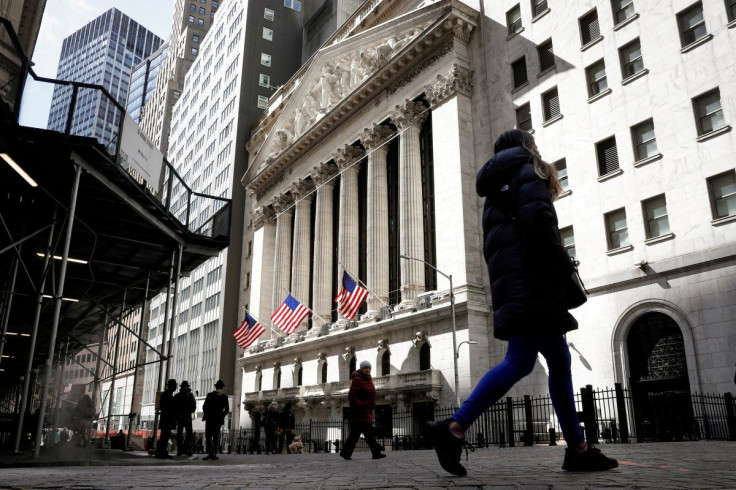Wall Street Sell-off: Is The Worst Over?

Last week was a bad week for Wall Street. After trading sideways early in the week, all major equity averages headed south towards the end. However, investors had nowhere to hide, as the sell-off eventually spread to oil and other commodities on Friday.
What's haunting Wall Street? Several things.
One of them is earnings jitters. They started with Netflix early on in the week and spread to healthcare stocks by Friday. "At this point in time, the percentage of S&P 500 companies beating EPS estimates is above the five-year average, but the magnitude of these positive surprises is below the five-year average," said John Butters, vice president and senior earnings analyst at FactSet. "As a result, the index is reporting higher earnings for the first quarter today relative to the end of last week and relative to the end of the quarter. However, the index is also reporting single-digit earnings growth for the first time since Q4 2020. The lower earnings growth rate for Q1 2022 relative to recent quarters can be attributed to both a difficult comparison to unusually high earnings growth in Q1 2021 and continuing macroeconomic headwinds."
Simply put, things on the earnings front are good but not good enough to beat "whisper numbers" and justify market valuations, especially among high-flying stocks in a bull market. Those who have been around Wall Street have seen this show several times before.
Meanwhile, according to some market analysts, the market doesn't seem to be oversold, including big techs, which are now part of major equity indexes. "Big Techs are absolutely not oversold. In fact, I would argue that due to high PE's and poor earnings over the last two quarters, these stocks are stuck in a rut, and way too many people own them still think it is easy money," says Bob Bilbruck, CEO at Capture. "Couple this with supply chain issues, sky-high inflation and the coming recession (I would argue, and the charts show we are already in one) that the people in these big tech stocks are going to get their face torn off and probably see a 40% drop in share price over the next two quarters. My target for the DOW is 26K by the end of Q3 22."
Then there are the continuing rising interest rate jitters. Thanks to a 40-year high for inflation, which has helped push the benchmark 10-year US Treasury bond close to the physiological level of 3%, more than double where it was three months ago.
Meanwhile, Fed officials have hawkish comments, which throw cold water to market rallies like Fed Chair Jerome Powell's hawkish comments on Thursday. He suggested that the Fed may raise the target Fed funds rate by 50 basis points at its next meeting in May, reversing its previous dovish stance.
"What can we expect when Jerome Powell, who for months argued that the inflationary pressure is transitory, is now using terms like "absolutely essential" when committing to raising rates at a faster-than-expected pace? In the near-to-medium term, the Fed's policy stance is very likely to be the primary force shaping market sentiments," says Kunal Sawhney, CEO, Kalkine Group. "The geopolitical conflict, with Goldman Sachs having recently highlighted Russia's debt problems, would also influence the Fed's stance if need be. In the event of the conflict adversely impacting the economic revival of the US besides hitting corporate revenues, the Fed may reverse the course to become a little more accommodative than aggressive in rate hikes."
Talking about geopolitical conflicts, Wall Street is also concerned about the diminishing influence of international institutions and the deglobalization of the economy, making the world economy look more and more like 1914 rather than 1948.
Still, Wall Street has demonstrated a remarkable ability to shake off bad news and come back, though things may turn worse before they turn better. It all depends on the two key variables that drive valuations, earnings and interest rates.
Next week, investors will get an opportunity to figure out the direction of earnings as tech giants like Apple, Amazon, and Microsoft report earnings. Also, investors will get the chance to see where inflation, the critical factor that drives interest rates, is heading as the US government reports new data on consumer prices.
Any positive surprise on either front could signal that the worst is over, at least for the near term.
© Copyright IBTimes 2025. All rights reserved.






















